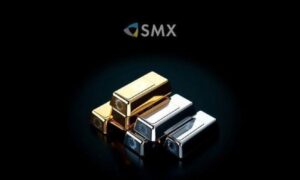Exchange-traded funds have become popular investment options in the US stock market, changing how people build portfolios and invest. Like mutual funds, ETFs represent a pool of investments. However, the unique aspect of ETFs is that they can be bought and sold on stock exchanges, which gives investors more flexibility.
An ETF typically tracks the performance of an index, sector, commodity, or other investment asset. They provide investors with a convenient way to invest in particular strategies or to track the overall market. Also, investors can invest in ETFs that follow the price of a single commodity or a mix of stocks. In this article, let’s explore the important role that ETFs play in the US stock market.
What Are Exchange-Trade Funds?
Exchange-traded funds (ETFs) are pooled investment securities similar to mutual funds. An ETF usually tracks an index, sector, commodity, or other asset. However, unlike mutual funds, it can be bought or sold on a stock exchange like a regular stock.
An ETF can track the price of a single commodity to the price of a large and diverse portfolio of securities. It is even possible to structure ETFs to track specific investment strategies.
Role Of Exchange-Traded Funds In The US Stock Market
The following are some of the key roles that ETFs play in the US stock market:
Access To Investment
ETFs allow investors to gain exposure to a wide range of asset classes, sectors, and markets. With ETF, investors are able to access a wide variety of stocks, bonds, commodities, or other underlying assets.
ETFs Make Markets Work Better
Market efficiency is improved by ETFs because they facilitate capital flow and enhance liquidity. As ETFs are traded on stock exchanges, they provide a secondary market where investors can buy and sell shares throughout the day. Both individual investors and institutions benefit from this liquidity. Moreover, with investment apps, investors can simplify their ETF investing process.
ETFs Provide Diversification
By offering exposure to a wide range of securities, ETFs help diversify portfolios. The ETF tracks an index or a market segment so that investors can spread their risk across multiple companies. Additionally, diversification reduces the impact any individual stock’s performance has on the overall portfolio.
Provide Transparency To Investors
ETFs provide investors with transparency. Most ETFs reveal their holdings on a daily basis, allowing investors to view the exact securities that the fund owns. A transparent process enhances investor confidence and allows them to make informed investment decisions.
Provide Cost Efficiency
The expense ratios of ETFs are generally lower than those of actively managed mutual funds. Because many ETFs are passively replicating an underlying index instead of picking stocks. As ETFs have lower costs, investors can get higher net returns.
Exchange-Traded Funds Offer Flexibility
Shares of ETFs are traded on stock exchanges, allowing investors to buy and sell them with flexibility. Market orders, limit orders, or advanced trading techniques such as stop-loss orders or options can be placed by investors. As a result of this flexibility, investors are able to react quickly to market movements or implement specific investment strategies.
Hedging and Risk Management
ETFs offer tools for hedging and risk management. By investing in inverse ETFs, investors can hedge against market declines by gaining the opposite performance of an underlying index. Moreover, leveraged or inverse leveraged ETFs can be used as a short-term trading instrument or risk management tool to seek amplified or inverse returns.
ETFs Are Widely Accessible To Investors
ETFs are accessible to investors of all levels of capital, including individuals, institutional investors, and small investors. Compared to other investment vehicles that may have higher investment minimums, they are easier to purchase through brokerage accounts.
Conclusion
There are a lot of benefits and opportunities to investing in exchange-traded funds (ETFs) on the US stock market. Investing in these vehicles offers diversification, enhances market efficiency, provides transparency, and is cost-effective. Furthermore, ETFs offer flexibility in trading, hedging options, and accessibility to investors of all levels. With ETFs, investors have visibility into the underlying securities held by the fund so that they can make informed investment decisions.
Additionally, ETFs have low expense ratios, so they can deliver higher returns for investors than actively managed mutual funds. Investing in ETFs is easy with investment apps. The BlinkX app has a user-friendly interface that makes it easy to research, choose, and invest. The BlinkX website can help investors with their ETF investment journeys. With BlinkX, investors can make informed decisions, monitor their ETF investments, and optimize their portfolios.



































